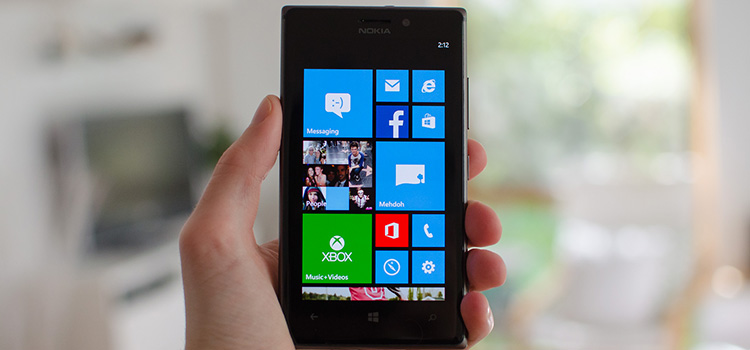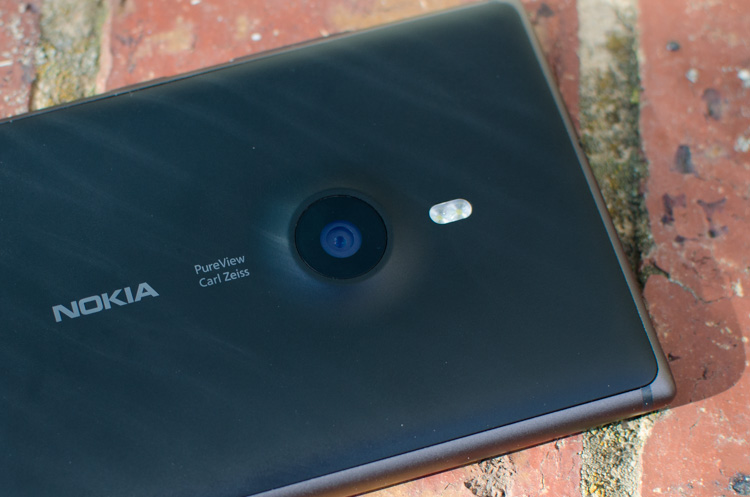Camera: Nokia's stronghold
When the Lumia 920 was released, undoubtedly one of the selling points was the camera, which featured optical image stabilization to deliver fantastic low-light images. However, a number of issues with Nokia's camera firmware meant that the full potential of the camera wasn't seen at its release, often producing less-than-awesome shots in daylight.
With the Lumia 925, Nokia has tweaked the firmware to help mitigate some of these issues, but the camera remains the same. You're getting an 8.7-megapixel 1/3.2" true-16:9 backside illuminated sensor with 1.4µm pixels, a Zeiss 26mm (effective) f/2.0 lens with optical stabilization, and a dual-LED flash. There's also a 1.2-megapixel f/2.4 front facing camera, but that's less important.
As soon as I started capturing images using the 'PureView' camera, it was obvious that Nokia had addressed my concerns with the Lumia 920's camera. No longer are daytime images heavily tinted in the presence of one strong color, and photos appear sharper with better white balance. The tweaks make this phone camera one of the best available on the market today, only behind the monstrosity that is Nokia's 41-megapixel Lumia 1020 camera phone.
Images taken with the Lumia 925 are very sharp for a smartphone, with the advantages of the Zeiss optics showing in the final results. The six-element lens is able to not only focus very close - up to 8cm from the subject - but looking at 100% crops reveals impressive crispness and clarity, likely with the help of some sharpening in post-processing. Bokeh from the f/2.0 lens is weak and grainy, but the large aperture allows a lot of light to pass in, and you can get decent background blur (for a smartphone) in the right conditions.
I was perhaps most impressed with the color accuracy from the Lumia 925's camera, which reproduces scenes with colors close to what the photo is trying to represent. Objects appear vibrant without being oversaturated, and greens in things such as grass and leaves look particularly great from the 925's photos. Sometimes, depending on what the phone was capturing beforehand, you can get two photos of the same subject with different white balances, but this is only a minor issue.
Where there are regions of high-contrast, such as a partially shadowy area with strong background lighting, the phone's camera again surprises with remarkably good dynamic range. It's not quite as good as the Galaxy S4's fantastic HDR mode, but photos that require a high dynamic range are captured quite well by the Lumia 925. Again, the usual limitations of a smartphone are seen, such as grainy dark areas and occasional range compression (especially in photos featuring the sky) that can result in a slight washed out look, but otherwise photos can be impressive.
Indoors, the phone's combination of a BSI sensor, large aperture lens and optical stabilization produce some very good photos. Grain is kept to a minimum even in lower-light situations, such as artificial indoor lighting at night, with colors that can look just as good as outdoor shots. I didn't once have to touch the (few) camera settings in an attempt to produce decent indoor, moderate-light photos, as the Lumia 925 was capable of that in auto mode.
Optical image stabilization (OIS) really shines in low-light, nighttime photography, where darkness literally comes to light in the photos you take. The 925 uses a slow shutter speed with a moderately high ISO to deliver spectacular nighttime images, although part of the process still lies with the photographer: if you don't have a steady hand at night, images will be blurred as OIS can't compensate for all shakes. I barely ever relied on the powerful dual-LED flash, which in itself is quite good, but unnecessary most of the time when attempting low-light photography.
Alongside the HTC One, the Lumia 925 is a phone that you will be able to use to capture your friends at that party or nighttime event, for photos of food at restaurants, or for images of that lit-up city street at night. If you're a true photographer I'd be hoping that you're using a DSLR for low-light photography, but for the casual user that doesn't demand many manual controls - because there aren't many at all - the Lumia 925 is very capable of the quick low-light shot.
Just on the camera controls, with Nokia relying on their Pro Camera app (which isn't yet available for the 925) and Windows Phone's Lenses feature, there are essentially no ways to enhance your camera photography. Luckily the camera is very good, because out of the box there's no HDR mode, no panorama, no slow motion video and no filters like I've come to expect from Android flagships.
Nokia has bundled Cinemagraph and Smart Cam for creating GIFs and burst shot photography respectively, but using the Lenses feature simply isn't as fast as switching camera modes on, say, the Galaxy S4.
Finally, video mode on the Lumia 925 is very solid again thanks to the inclusion of OIS. The phone's 1080p video is sharp and able to compensate well for shakes while panning and moving around, and the dual microphones capture decent audio. The overall quality of the focus, white balance, vibrance and color quality is very similar to still captures, and that's great to see. A sample of the video recording can be found in our video review on page one.



















